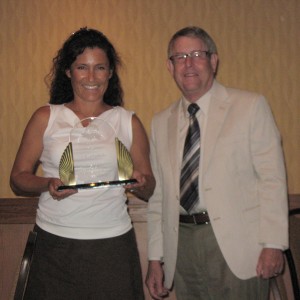The California Department of Food and Agriculture is preparing for quarantine and eradication measures in response to the Oriental fruit fly (OFF) infestation detected in the Stockton Area of San Joaquin County.
“Our statewide array of pest traps has worked precisely as designed,” said CDFA Secretary Karen Ross. “In cooperation with local agricultural commissioner’s offices, we set and check traps daily across the state to detect these infestations when they are still small, enabling a focused, fast response. We already have crews on the ground preparing for a quarantine and working to eradicate the infestation.”
The first two OFFs were detected in a trap in the Stockton area on Thursday, September 8, prompting crews to increase the trapping density in the region over the weekend. The additional traps have since picked up enough flies to confirm the presence of a breeding population and trigger preparations for a quarantine.
The quarantine will restrict the movement of crops, plants and related materials that could harbor or spread the OFF. Quarantine boundaries and specific restrictions will be formally announced once agricultural officials have analyzed trapping results and determined the extent of the infested area. Crews have already begun notifying growers, nursery owners and other agriculture-related businesses of the pending quarantine.
Eradication efforts are already underway – beginning with a larval survey in which crews pick and cut into host fruits and vegetables within 200 meters of the sites where OFFs were trapped, as well as treatment of trees and plants on properties within 200 meters with the organic-approved product spinosad.
Following the principles of integrated pest management, CDFA uses “male attractant” treatment as the mainstay of its eradication measures for this pest. This approach has successfully eliminated dozens of fruit fly infestations from California since the 1970s. Workers squirt a small patch of fly attractant mixed with a very small dose of pesticide approximately 8-10 feet off the ground on street trees and similar surfaces; male flies are attracted to the mixture and die after consuming it. Preparations are underway to begin this phase of the response. The male attractant treatment program will be carried out over several square miles surrounding the sites where the insects were trapped.
Eradication activities may also include removal of susceptible host fruit and vegetables within 100 meters of the infested sites. Residents’ questions about the program may be directed to CDFA’s Pest Hotline, 1-800-491-1899. Stockton residents who have fruit trees are also encouraged to call to report any maggots that they find in backyard fruit, and to refrain from moving homegrown fruit off of their property or giving it away. Homegrown fruit may be consumed or processed (canned, juiced, etc.) on-site.
The Oriental fruit fly is known to target over 230 different fruit, vegetable and plant commodities. Damage occurs when the female lays eggs inside the fruit. The eggs hatch into maggots that tunnel through the flesh of the fruit, making it unfit for consumption.
While fruit flies and other pests that threaten California’s crops are sometimes detected in agricultural areas, the vast majority are found in urban and suburban communities. The most common pathway for these pests to enter the state is by “hitchhiking” in fruits and vegetables brought back illegally by travelers as they return from infested regions around the world. The OFF is widespread throughout much of the mainland of Southern Asia and neighboring islands including Sri Lanka and Taiwan. It is also found in Hawaii.









